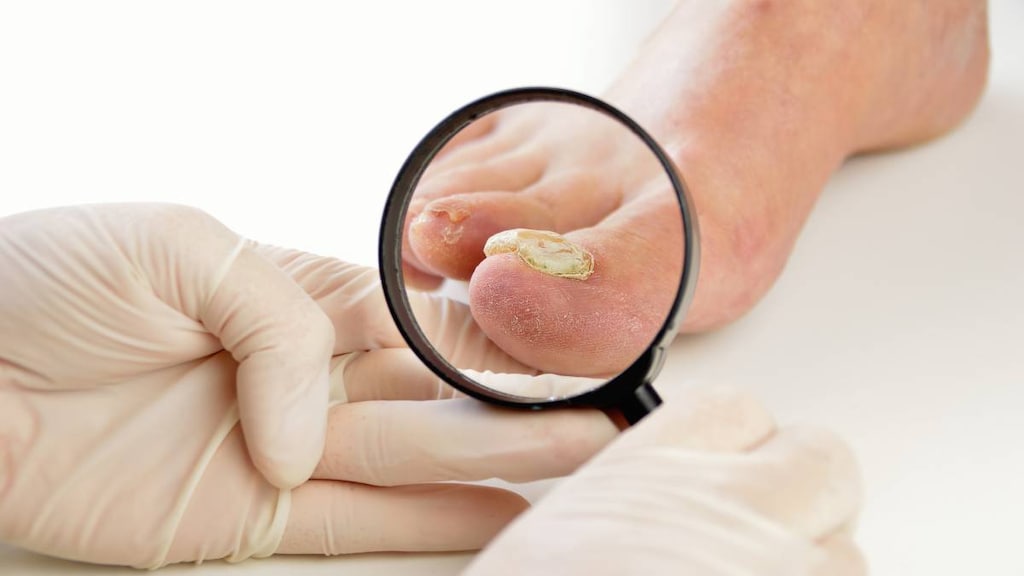Dosage Forms
Excipient information presented when available (limited, particularly for generics); consult specific product labeling.
Solution, Intravenous:
Stelara: 130 mg/26 mL (26 mL) [contains edetate disodium dihydrate, polysorbate 80]
Solution, Subcutaneous [preservative free]:
Stelara: 45 mg/0.5 mL (0.5 mL) [contains polysorbate 80]
Solution Prefilled Syringe, Subcutaneous [preservative free]:
Stelara: 45 mg/0.5 mL (0.5 mL); 90 mg/mL (1 mL) [contains polysorbate 80]
Pharmacology
Mechanism of Action
Ustekinumab is a human monoclonal antibody that binds to and interferes with the proinflammatory cytokines, interleukin (IL)-12 and IL-23. Biological effects of IL-12 and IL-23 include natural killer (NK) cell activation, CD4+ T-cell differentiation and activation. Ustekinumab also interferes with the expression of monocyte chemotactic protein-1 (MCP-1), tumor necrosis factor-alpha (TNF-α), interferon-inducible protein-10 (IP-10), and interleukin-8 (IL-8). Significant clinical improvement in psoriasis and psoriatic arthritis patients is seen in association with reduction of these proinflammatory signalers.
Pharmacokinetics/Pharmacodynamics
Distribution
Crohn disease: Vd (central compartment): 2.7 L; Vdss: 4.6 L.
Ulcerative colitis: Vd (central compartment): 3 L; Vdss: 4.4 L.
Time to Peak
Psoriasis: SubQ: Plasma: 45 mg: 13.5 days; 90 mg: 7 days.
Half-Life Elimination
SubQ:
Crohn disease, ulcerative colitis: Terminal: ~19 days.
Psoriasis: 14.9 ± 4.6 to 45.6 ± 80.2 days.
Use in Specific Populations
Special Populations Note
Body weight: When given the same dose, subjects weighing >100 kg had lower median serum concentrations compared with those subjects weighing ≤100 kg. The median trough serum concentrations of ustekinumab in subjects >100 kg in the 90 mg group were comparable with those in subjects ≤100 kg in the 45 mg group.
Use: Labeled Indications
Crohn disease: Treatment of moderately to severely active Crohn disease in adults.
Plaque psoriasis: Treatment of moderate to severe plaque psoriasis in patients ≥12 years of age who are candidates for phototherapy or systemic therapy.
Psoriatic arthritis: Treatment of active psoriatic arthritis (as monotherapy or in combination with methotrexate) in adults.
Ulcerative colitis: Treatment of moderately to severely active ulcerative colitis in adults.
Contraindications
Clinically significant hypersensitivity to ustekinumab or any component of the formulation
Canadian labeling: Additional contraindications (not in the US labeling): Severe infections such as sepsis, tuberculosis, and opportunistic infections
Dosage and Administration
Dosing: Adult
Crohn disease:
Induction: IV:
≤55 kg: 260 mg as single dose
>55 kg to 85 kg: 390 mg as single dose
>85 kg: 520 mg as single dose
Maintenance: SubQ: 90 mg every 8 weeks; begin maintenance dosing 8 weeks after the IV induction dose.
Plaque psoriasis: SubQ:
Initial and maintenance:
≤100 kg: 45 mg at 0 and 4 weeks, and then every 12 weeks thereafter
>100 kg: 90 mg at 0 and 4 weeks, and then every 12 weeks thereafter. Note: Doses of 45 mg given to patients >100 kg were also efficacious; however, 90 mg is the recommended dose in these patients due to greater efficacy.
Psoriatic arthritis: SubQ: Note: When used for psoriatic arthritis, may be administered alone or in combination with methotrexate.
Initial and maintenance: 45 mg at 0 and 4 weeks, and then every 12 weeks thereafter.
Coexistent psoriatic arthritis and moderate to severe plaque psoriasis in patients >100 kg: Initial and maintenance: 90 mg at 0 and 4 weeks, and then every 12 weeks thereafter.
Ulcerative colitis:
Induction: IV:
≤55 kg: 260 mg as single dose.
>55 kg to 85 kg: 390 mg as single dose.
>85 kg: 520 mg as single dose.
Maintenance: SubQ: 90 mg every 8 weeks; begin maintenance dosing 8 weeks after the IV induction dose.
Dosing: Geriatric
Refer to adult dosing.
Dosing: Pediatric
Note: Dosing presented in mg/kg and fixed mg; use extra precaution to ensure dosing units.
Plaque psoriasis, moderate to severe: Children ≥12 years and Adolescents: SubQ:
<60 kg: Initial: 0.75 mg/kg at 0 and 4 weeks, followed by maintenance dose of 0.75 mg/kg every 12 weeks.
≥60 to ≤100 kg: Initial: 45 mg at 0 and 4 weeks, followed by maintenance dose of 45 mg every 12 weeks.
>100 kg: Initial: 90 mg at 0 and 4 weeks, followed by maintenance dose of 90 mg every 12 weeks.
Inflammatory bowel disease, moderate to severe; refractory: Limited data available (Bishop 2016; Dayan 2019): Note: Dosing varies by route of administration (IV or SubQ); use extra precaution.
Children ≥12 years and Adolescents:
Induction: IV:
<55 kg: 260 mg as single dose.
≥55 to 85 kg: 390 mg as single dose.
>85 kg: 520 mg as single dose.
Maintenance: SubQ: 90 mg every 8 weeks; begin maintenance dosing 8 weeks after the IV induction dose.
Dosing based on retrospective studies and case reports. A retrospective study of 52 adolescent and young adult (<21 years) patients (median: 16.8 years; 38 patients <18 years of age) diagnosed with inflammatory bowel disease (n=42 Crohn disease; n=10 ulcerative colitis or unspecified) with a majority (81%) having failed previous tumor necrosis factor (TNF)-modulator therapy, utilized a single-dose weight-based IV induction protocol of ustekinumab in most patients (47/52, 90%); the other subjects (5) received subcutaneous induction prior to availability of IV product. Following induction, all patients received fixed dose (regardless of weight) SubQ maintenance therapy (90 mg every 8 weeks). Results showed at the end of 52 weeks, 58% of patients had achieved steroid-free remission and 65% had achieved clinical remission. At week 52, of the 39 patients who continued on ustekinumab, 62% of patients required dosing every 4 to 7 weeks to maintain remission (Dayan 2019). In a retrospective case series, 4 patients (ages 12 to 17 years) who had failed or unable to tolerate previous TNF modifiers received subcutaneous induction doses of 90 mg every 4 weeks for 2 doses, followed by 90 mg every 8 weeks. Two patients were able to wean off steroid regimens and had clinical improvement and two patients were unresponsive to therapy (Bishop 2016).
Reconstitution
IV: After calculating the appropriate dosage and volume of ustekinumab (using 130 mg per 26 mL vials), withdraw an equal volume of fluid from 250 mL bag of NS or ½ NS and discard. Add ustekinumab to the NS or ½ NS bag; final volume of bag should be 250 mL. Gently mix bag.
Administration
IV: Infuse over at least 1 hour; use of IV set with an in-line, low-protein binding filter (0.2 micrometer) required. Do not infuse concomitantly in the same IV line with other agents.
Subcutaneous: Administer by subcutaneous injection into the top of the thigh, abdomen, upper arms, or buttocks. Rotate sites. Do not inject into tender, bruised, erythematous, or indurated skin. Avoid areas of skin where psoriasis is present. Discard any unused portion. Intended for use under supervision of physician; self-injection may occur after proper training. If using the single-dose vial, a 1 mL syringe with a 27-gauge 1/2 inch needle is recommended.
Storage
Refrigerate vials and prefilled syringes at 2°C to 8°C (36°F to 46°F); do not freeze. Store vials upright. Keep the product in the original carton to protect from light until the time of use. Do not shake. Discard any unused portion. Once diluted, solution for IV infusion may be stored up to 7 hours at room temperature (up to 25°C [77°F]).
Drug Interactions
Baricitinib: Immunosuppressants may enhance the immunosuppressive effect of Baricitinib. Management: Use of baricitinib in combination with potent immunosuppressants such as azathioprine or cyclosporine is not recommended. Concurrent use with antirheumatic doses of methotrexate or nonbiologic disease modifying antirheumatic drugs (DMARDs) is permitted. Consider therapy modification
BCG (Intravesical): Immunosuppressants may diminish the therapeutic effect of BCG (Intravesical). Avoid combination
Belimumab: May enhance the immunosuppressive effect of Biologic Anti-Psoriasis Agents. Avoid combination
Cladribine: May enhance the immunosuppressive effect of Immunosuppressants. Avoid combination
Coccidioides immitis Skin Test: Immunosuppressants may diminish the diagnostic effect of Coccidioides immitis Skin Test. Monitor therapy
Denosumab: May enhance the adverse/toxic effect of Immunosuppressants. Specifically, the risk for serious infections may be increased. Monitor therapy
Echinacea: May diminish the therapeutic effect of Immunosuppressants. Consider therapy modification
Fingolimod: Immunosuppressants may enhance the immunosuppressive effect of Fingolimod. Management: Avoid the concomitant use of fingolimod and other immunosuppressants when possible. If combined, monitor patients closely for additive immunosuppressant effects (eg, infections). Consider therapy modification
InFLIXimab: May enhance the immunosuppressive effect of Biologic Anti-Psoriasis Agents. Avoid combination
Leflunomide: Immunosuppressants may enhance the adverse/toxic effect of Leflunomide. Specifically, the risk for hematologic toxicity such as pancytopenia, agranulocytosis, and/or thrombocytopenia may be increased. Management: Consider not using a leflunomide loading dose in patients receiving other immunosuppressants. Patients receiving both leflunomide and another immunosuppressant should be monitored for bone marrow suppression at least monthly. Consider therapy modification
Natalizumab: Immunosuppressants may enhance the adverse/toxic effect of Natalizumab. Specifically, the risk of concurrent infection may be increased. Avoid combination
Nivolumab: Immunosuppressants may diminish the therapeutic effect of Nivolumab. Consider therapy modification
Ocrelizumab: May enhance the immunosuppressive effect of Immunosuppressants. Monitor therapy
Pidotimod: Immunosuppressants may diminish the therapeutic effect of Pidotimod. Monitor therapy
Pimecrolimus: May enhance the adverse/toxic effect of Immunosuppressants. Avoid combination
Roflumilast: May enhance the immunosuppressive effect of Immunosuppressants. Consider therapy modification
Siponimod: Immunosuppressants may enhance the immunosuppressive effect of Siponimod. Monitor therapy
Sipuleucel-T: Immunosuppressants may diminish the therapeutic effect of Sipuleucel-T. Management: Evaluate patients to see if it is medically appropriate to reduce or discontinue therapy with immunosuppressants prior to initiating sipuleucel-T therapy. Consider therapy modification
Smallpox and Monkeypox Vaccine (Live): Immunosuppressants may diminish the therapeutic effect of Smallpox and Monkeypox Vaccine (Live). Monitor therapy
Tacrolimus (Topical): May enhance the adverse/toxic effect of Immunosuppressants. Avoid combination
Tertomotide: Immunosuppressants may diminish the therapeutic effect of Tertomotide. Monitor therapy
Tofacitinib: Immunosuppressants may enhance the immunosuppressive effect of Tofacitinib. Management: Concurrent use with antirheumatic doses of methotrexate or nonbiologic disease modifying antirheumatic drugs (DMARDs) is permitted, and this warning seems particularly focused on more potent immunosuppressants. Consider therapy modification
Trastuzumab: May enhance the neutropenic effect of Immunosuppressants. Monitor therapy
Upadacitinib: Immunosuppressants may enhance the immunosuppressive effect of Upadacitinib. Avoid combination
Vaccines (Inactivated): Immunosuppressants may diminish the therapeutic effect of Vaccines (Inactivated). Management: Vaccine efficacy may be reduced. Complete all age-appropriate vaccinations at least 2 weeks prior to starting an immunosuppressant. If vaccinated during immunosuppressant therapy, revaccinate at least 3 months after immunosuppressant discontinuation. Consider therapy modification
Vaccines (Live): Immunosuppressants may enhance the adverse/toxic effect of Vaccines (Live). Immunosuppressants may diminish the therapeutic effect of Vaccines (Live). Management: Avoid use of live organism vaccines with immunosuppressants; live-attenuated vaccines should not be given for at least 3 months after immunosuppressants. Exceptions: Smallpox and Monkeypox Vaccine (Live). Avoid combination
Adverse Reactions
>10%:
Immunologic: Antibody development (≤12%; associated with reduced efficacy in psoriasis patients)
Infection: Infection (psoriasis: 27% to 72%; severe infection: ≤3%)
Respiratory: Nasopharyngitis (Crohn disease: 11%)
1% to 10%:
Central nervous system: Headache (psoriasis: 5%), fatigue (psoriasis: 3%), dizziness (psoriasis: 2%), depression (psoriasis: 1%)
Dermatologic: Pruritus (2% to 4%), acne vulgaris (Crohn disease: 1%)
Gastrointestinal: Vomiting (Crohn disease: 4%), nausea (psoriatic arthritis: 3%), dental disease (infection; 1%)
Genitourinary: Vaginal mycosis (Crohn disease: ≤5%), vulvovaginal candidiasis (Crohn disease: ≤5%), urinary tract infection (Crohn disease: 4%)
Hematologic & oncologic: Skin carcinoma (nonmelanoma including squamous cell carcinoma; psoriasis: 2%)
Local: Erythema at injection site (1% to 5%)
Neuromuscular & skeletal: Arthralgia (psoriatic arthritis: 3%), back pain (psoriasis: 2%), asthenia (Crohn disease: 1%)
Respiratory: Bronchitis (Crohn disease: 5%), sinusitis (Crohn disease: 3%), pharyngolaryngeal pain (psoriasis: 2%)
Frequency not defined:
Gastrointestinal: Appendicitis, cholecystitis, gastroenteritis
Genitourinary: Perirectal abscess
Infection: Sepsis, viral infection
Neuromuscular & skeletal: Osteomyelitis
Respiratory: Pneumonia
<1%, postmarketing, and/or case reports: Anaphylaxis, angioedema, bacterial infection, bleeding at injection site, bronchiolitis obliterans organizing pneumonia, bruising at injection site, cellulitis, diverticulitis of the gastrointestinal tract, eosinophilic pneumonitis, erythrodermic psoriasis, fungal infection, herpes zoster infection, hypersensitivity reaction, induration at injection site, interstitial pneumonitis, irritation at injection site, itching at injection site, malignant neoplasm, meningitis due to listeria monocytogenes, ocular herpes simplex, pain at injection site, pustular psoriasis, reversible posterior leukoencephalopathy syndrome, skin rash, swelling at injection site, urticaria
Warnings/Precautions
Concerns related to adverse effects:
- Antibody formation: Antibody formation to ustekinumab has been observed with therapy.
- Hypersensitivity reactions: Hypersensitivity, including anaphylaxis and angioedema, has been reported. Discontinue immediately with signs/symptoms of hypersensitivity reaction and treat appropriately as indicated.
- Infections: May increase the risk for infections or reactivation of latent infections. Serious bacterial, mycobacterial, fungal, and viral infections have been observed with use. Avoid use in patients with clinically important active infection until the infection resolves or is successfully treated. Exercise caution when considering use in patients with a history of new/recurrent infections, with conditions that predispose them to infections (eg, diabetes or residence/travel from areas of endemic mycoses), with chronic, latent, or localized infections, or who are genetically deficient in IL-12/IL-23 (IL-12/IL-23 genetic deficiency may predispose patients to disseminated infection). Patients who develop a new infection while undergoing treatment should consult their health care provider and be monitored closely. If a patient develops a serious infection, therapy should be discontinued or withheld until successful resolution of infection.
- Malignancy: May increase the risk for malignancy although the impact on the development and course of malignancies is not fully defined. Rapidly appearing cutaneous squamous cell carcinomas (multiple) have been reported in patients receiving ustekinumab who were at risk for developing nonmelanoma skin cancer. Monitor all patients closely for the development of nonmelanoma skin cancer; closely follow patients >60 years of age, with a history of prolonged immunosuppression, and in patients with a history of PUVA treatment. Use with caution in patients with prior malignancy (use not studied in this population).
- Neurotoxicity: Reversible posterior leukoencephalopathy syndrome (RPLS) has been observed (rare). RPLS symptoms include headache, seizures, confusion, and visual disturbances; may be fatal. Monitor; discontinue ustekinumab if symptoms occur and administer appropriate therapy.
- Noninfectious pneumonia: Cases of interstitial pneumonia, eosinophilic pneumonia, and cryptogenic organizing pneumonia, some leading to respiratory failure and prolonged hospitalization, have been reported; most commonly has occurred within the first few doses. Symptoms may include cough, dyspnea, and interstitial infiltrates. Discontinue therapy and institute appropriate treatment if noninfectious pneumonia is suspected or confirmed.
- Tuberculosis: Do not use in patients with active tuberculosis (TB). Patients should be evaluated for latent tuberculosis infection with a tuberculin skin test prior to starting therapy. Treatment of latent TB should be initiated before ustekinumab therapy is used. Consider antituberculosis treatment in patients with a history of latent or active tuberculosis if an adequate prior treatment course cannot be confirmed. During and following treatment, monitor for signs/symptoms of active TB.
Concurrent drug therapy issues:
- Allergen immunotherapy: Use caution in patients receiving or who have received allergen immunotherapy, particularly for anaphylaxis; ustekinumab may decrease the protective effect of allergen immunotherapy, which may increase the risk of an allergic reaction to allergen immunotherapy.
- Drug-drug interactions: Potentially significant interactions may exist, requiring dose or frequency adjustment, additional monitoring, and/or selection of alternative therapy. Consult drug interactions database for more detailed information.
- Immunosuppressive therapy: Use in combination with other immunosuppressive drugs during psoriasis studies has not been evaluated; use caution. Use in combination with methotrexate during psoriatic arthritis studies did not appear to affect safety or efficacy.
Special populations:
- Patients >100 kg: May require higher dose to achieve adequate serum levels.
Dosage form specific issues:
- Latex: Packaging may contain natural latex rubber.
- Polysorbate 80: Some dosage forms may contain polysorbate 80 (also known as Tweens). Hypersensitivity reactions, usually a delayed reaction, have been reported following exposure to pharmaceutical products containing polysorbate 80 in certain individuals (Isaksson 2002; Lucente 2000; Shelley 1995). Thrombocytopenia, ascites, pulmonary deterioration, and renal and hepatic failure have been reported in premature neonates after receiving parenteral products containing polysorbate 80 (Alade 1986; CDC 1984). See manufacturer's labeling.
Other warnings/precautions:
- Immunizations: Patients should be brought up to date with all immunizations before initiating therapy. Live vaccines should not be given concurrently; inactivated or nonlive vaccines may be given concurrently, but may not elicit a proper immune response. BCG vaccines should not be given 1 year prior to, during, or 1 year following treatment.
- Phototherapy: Use in combination with phototherapy has not been studied; use caution.
Monitoring Parameters
Tuberculosis screening (prior to initiating and periodically during therapy); CBC; ustekinumab-antibody formation; monitor for signs/symptoms of infection, reversible posterior leukoencephalopathy syndrome (RPLS), and squamous cell skin carcinoma.
Pregnancy
Pregnancy Considerations
Ustekinumab crosses the placenta (Klenske 2019; Rowan 2018).
Ustekinumab is a humanized monoclonal antibody (IgG1). Placental transfer of human IgG is dependent upon the IgG subclass, maternal serum concentrations, birth weight, and gestational age, generally increasing as pregnancy progresses. The lowest exposure would be expected during the period of organogenesis (Palmeira 2012; Pentsuk 2009).
Following administration to two pregnant patients with Crohn disease, cord blood concentrations of ustekinumab were ~2 to 4 times higher than maternal trough levels at delivery. In both cases, ustekinumab was administered throughout pregnancy and stopped 4 to 8 weeks prior to delivery (Klenske 2019; Rowan 2018). In one case, maternal trough concentrations remained stable throughout pregnancy (Rowan 2018).
Vaccination with live vaccines (eg, rotavirus vaccine) should be avoided for the first 6 months of life if exposure to a biologic agent occurs during the third trimester of pregnancy (eg, >27 weeks' gestation) (Mahadevan 2019).
The American Academy of Dermatology considers the safety of ustekinumab for the treatment of psoriasis in pregnancy to be uncertain (AAD-NPF [Menter 2019]).
Inflammatory bowel disease is associated with adverse pregnancy outcomes including an increased risk of miscarriage, premature delivery, delivery of a low birth weight infant, and poor maternal weight gain. Management of maternal disease should be optimized prior to pregnancy. Treatment decreases disease flares, disease activity, and the incidence of adverse pregnancy outcomes. Information related to the use of ustekinumab in pregnancy is limited. When treatment for inflammatory bowel disease is needed in pregnant women, appropriate biologic therapy can be continued without interruption. Serum levels should be evaluated prior to conception and optimized to avoid subtherapeutic concentrations or high levels which may increase placental transfer. Dosing can be adjusted so delivery occurs at the lowest serum concentration. For ustekinumab, the final injection can be given 6 to 10 weeks prior to the estimated date of delivery (4 to 5 weeks before delivery if every-4-week dosing), then continued 48 hours' postpartum (Mahadevan 2019).
The American Academy of Dermatology considers ustekinumab for the treatment of psoriasis to be acceptable for use in male patients planning to father a child (AAD-NPF [Menter 2019]). Women and men with well-controlled psoriasis who are planning a pregnancy and wish to avoid fetal exposure can consider discontinuing ustekinumab 15 weeks prior to attempting pregnancy (Rademaker 2018). Treatment algorithms are available for use of biologics in female patients with Crohn disease who are planning a pregnancy (Weizman 2019).
Data collection to monitor pregnancy and infant outcomes following exposure to ustekinumab is ongoing. Women exposed to ustekinumab during pregnancy for the treatment of an autoimmune disease (eg, inflammatory bowel disease) may contact the OTIS Autoimmune Diseases Study at 877-311-8972.
Patient Education
What is this drug used for?
- It is used to treat plaque psoriasis.
- It is used to treat psoriatic arthritis.
- It is used to treat Crohn disease.
- It is used to treat ulcerative colitis.
Frequently reported side effects of this drug
- Loss of strength and energy
- Nose irritation
- Nausea
- Headache
- Abdominal pain
- Diarrhea
- Vomiting
- Common cold symptoms
- Injection site irritation
- Throat irritation
Other side effects of this drug: Talk with your doctor right away if you have any of these signs of:
- Infection
- Urinary tract infection like blood in the urine, burning or painful urination, passing a lot of urine, fever, lower abdominal pain, or pelvic pain.
- Posterior reversible encephalopathy syndrome like confusion, not alert, vision changes, seizures, or severe headache.
- Shortness of breath
- Warm, red, or painful skin or sores
- Flushing
- Chest pain
- Cough
- Severe dizziness
- Passing out
- Vaginal pain, itching, and discharge
- Trouble breathing
- Skin lump
- Mole changes
- Skin growths
- Signs of a significant reaction like wheezing; chest tightness; fever; itching; bad cough; blue skin color; seizures; or swelling of face, lips, tongue, or throat.
Note: This is not a comprehensive list of all side effects. Talk to your doctor if you have questions.
Consumer Information Use and Disclaimer: This information should not be used to decide whether or not to take this medicine or any other medicine. Only the healthcare provider has the knowledge and training to decide which medicines are right for a specific patient. This information does not endorse any medicine as safe, effective, or approved for treating any patient or health condition. This is only a brief summary of general information about this medicine. It does NOT include all information about the possible uses, directions, warnings, precautions, interactions, adverse effects, or risks that may apply to this medicine. This information is not specific medical advice and does not replace information you receive from the healthcare provider. You must talk with the healthcare provider for complete information about the risks and benefits of using this medicine.




